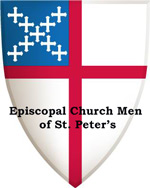
Editor’s note – Passages from 1 Thessalonians will be the Epistle reading until Nov. 16. Here is a short introduction –
Thessalonica was a bustling seaport city at the head of the Thermaic Gulf. It was an important communication and trade center, located at the junction of the great Egnatian Way and the road leading north to the Danube.
It was the largest city in Macedonia and was also the capital of its province. Thessalonica was the largest city of Macedonia. It has been estimated that during Paul’s time its population may have been as high as 200,000. The majority of the inhabitants were Greeks, but there was also a mixture of other ethnic groups, including Jews
In c. 315 BCE Cassander, the son-in-law of Philip of Macedon (who fathered Alexander the Great) gathered and organized the area villages into a new metropolis, Thessalonica. He gave the city its name in honor of his wife, the half-sister of Alexander.
Thessalonica remained in Greek hands until 168 BCE, when the Romans took possession after winning the battle of Pydna
The Roman proconsul, the governor of Macedonia, had his residence in Thessalonica, but because it was a “free city” he did not control its internal affairs. No Roman garrison was stationed there, and in spirit and atmosphere it was a Greek rather than a Roman city. Enjoying local autonomy, the city was apparently governed by a board of magistrates
It is most likely that 1 Thessalonians was written shortly after Paul’s arrival in Corinth, for he would be eager to correspond with the new church as soon as possible. This would be spring of 50 CE. It may have been 51 CE based on an inscription discovered at Delphi, Greece. Thus, 1 Thessalonians is the second canonical book penned by the apostle Paul, written within two years after Galatians.
The background of the Thessalonian church is found in Ac 17:1–9. Since Paul began his ministry there in the Jewish synagogue, it is reasonable to assume that the new church included some Jews. However, 1:9–10; Ac 17:4 seem to indicate that the church was largely Gentile in membership.


